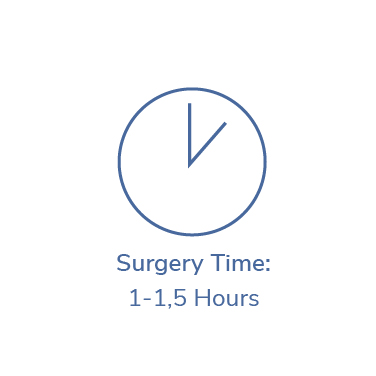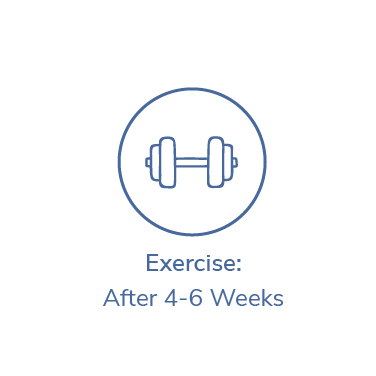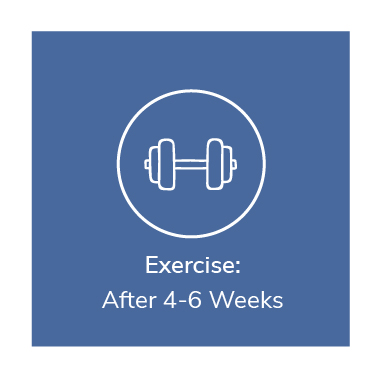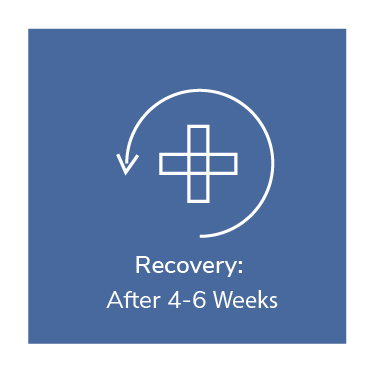




















WHAT IS A Neck Lift?
During the ageing process skin can lose its elasticity and fatty tissue under the skin may start to shrink in volume. This could cause skin to cease to follow the contour of the face so closely and therefore become loose. This process becomes more noticeable in the cheek area at the bulk of the cheek, resulting in a fold of tissue from the side of the nose to below the jaw line, causing a heavy jowl.
The Neck Lift procedure involves the removal of loose skin and tightening of sagging muscles. Many creams, medications and facial exercises have been used as anti-ageing treatments, however none of these significantly affect the ageing process. The most effective way of significantly altering an unfavourable appearance is to have this kind of surgery. In general, the Neck Lift procedure involves the removal of excess skin from the chin and neck area and the operation is usually carried out under general anaesthetic, by one of our highly skilled surgeons. The incisions are generally made behind the hair line and in natural creases. The resulting scars fade in time to become barely visible.
Sagging or Loose Neck Skin: If you have excess or sagging skin in the neck area, creating the appearance of jowls, a double chin, or a “turkey wattle,” a neck lift can help address these concerns.
Muscle Banding: Visible vertical bands or cords in the neck caused by weakened or separated neck muscles, known as platysmal bands, can be improved through a neck lift procedure.
Excess Fat Deposits: Accumulation of excess fat under the chin or along the jawline can contribute to an undefined neck contour. Neck lift surgery can help remove or reposition these fat deposits to achieve a more sculpted appearance.
Neck Wrinkles or Creases: Deep lines, wrinkles, or creases on the neck skin can be targeted and smoothed out through a neck lift procedure.
Lack of Definition or Jawline Contour: If you have a poorly defined jawline or lack of distinct angles between the neck and jaw, a neck lift can help create a more youthful and well-defined appearance.
Good General Health: To undergo any surgical procedure, including a neck lift, it is important to be in good overall health. Your surgeon will assess your medical history, perform a physical examination, and consider any underlying health conditions to determine if you are a suitable candidate.
Realistic Expectations: Having realistic expectations about the outcome of a neck lift surgery is crucial. While the procedure can provide significant improvements, it is important to understand its limitations and potential risks.
Non-Smoker: Smoking can negatively impact the healing process and increase the risk of complications. Candidates who smoke may be advised to quit or refrain from smoking for a certain period before and after the surgery.
Preparing for neck lift surgery involves taking certain steps to ensure a smooth and successful procedure:
Consultation and Pre-operative Evaluation: Schedule a consultation with your plastic surgeon to discuss your goals, expectations, and medical history. They will evaluate your overall health, assess your neck, and determine if you are a suitable candidate for a neck lift. Be prepared to discuss any medications, allergies, previous surgeries, or medical conditions you have.
Follow Pre-operative Instructions: Your surgeon will provide detailed pre-operative instructions that you should follow carefully. These may include guidelines on eating and drinking restrictions before surgery, discontinuing certain medications or supplements that can increase bleeding risks, and quitting smoking if you are a smoker.
Arrange Transportation and Support: Plan for someone to accompany you to and from the surgical facility on the day of the procedure. You may not be able to drive yourself due to the effects of anesthesia and the recovery process. Additionally, having someone available to assist you during the initial stages of recovery can be helpful.
Medications and Supplements: Inform your surgeon about all the medications, vitamins, and supplements you are currently taking. They will advise you on which medications to continue or discontinue before the surgery. Avoid taking any blood-thinning medications or supplements that can increase the risk of bleeding.
Medical Tests: Your surgeon may request certain medical tests or laboratory work prior to the surgery. This may include blood tests, EKG, or a medical clearance from your primary care physician to ensure you are in good health for the procedure.
Arrange for Recovery Time: Plan for sufficient time off work or other daily responsibilities to allow for proper recovery. Recovery time can vary, but most individuals typically require at least one to two weeks before returning to normal activities.
Prepare Your Home: Create a comfortable and relaxing environment at home for your recovery period. Arrange pillows, ice packs, and any necessary medications or supplies as recommended by your surgeon. Ensure that your home is clean, organized, and free from any potential hazards that could interfere with your recovery.
Follow Fasting Guidelines: Your surgeon will provide instructions on fasting before the surgery. Typically, you will be asked to avoid eating or drinking anything, including water, for a certain period of time before the procedure.
Dress Comfortably: On the day of surgery, wear loose, comfortable clothing that can be easily removed and put back on after the procedure. Avoid wearing any jewelry, makeup, or accessories.
Follow Pre-operative Skincare Routine: Your surgeon may provide specific instructions on skincare preparation before the surgery. This may involve avoiding certain skincare products or procedures that can increase the risk of complications.
After undergoing neck lift surgery, it is essential to follow post-operative instructions to facilitate a smooth recovery and optimize your results. Here are some general guidelines for the post-operative period:
Recovery Facility: You may spend a short time in a recovery facility or be discharged to recover at home on the same day of the surgery. Follow your surgeon’s instructions regarding the duration of your stay and any necessary post-operative care.
Dressings and Incisions: Your surgeon will provide specific instructions on how to care for your incisions and any dressings that have been applied. It’s important to keep the incision areas clean, dry, and protected as directed. Avoid touching or manipulating the incisions unless instructed by your surgeon.
Pain Management: Some discomfort, swelling, and bruising in the treated area are common after neck lift surgery. Your surgeon will prescribe pain medication or recommend over-the-counter pain relievers to manage any discomfort. Take medications as directed and report any severe or persistent pain to your surgeon.
Compression Garment: You may be instructed to wear a compression garment around your neck and chin area to help reduce swelling and provide support. Follow your surgeon’s recommendations regarding the duration and frequency of wearing the garment.
Physical Activities and Rest: It’s important to get plenty of rest during the initial recovery period. Avoid strenuous activities, heavy lifting, and intense exercise for several weeks or as advised by your surgeon. Gradually increase your activity level as you heal and follow your surgeon’s guidelines.
Swelling and Bruising: Swelling and bruising are common after neck lift surgery and will gradually subside over time. Applying cold compresses or ice packs as directed can help reduce swelling. Keep your head elevated when resting or sleeping to further minimize swelling.
Follow-up Appointments: Attend all scheduled follow-up appointments with your surgeon to monitor your healing progress and address any concerns. Your surgeon will remove any stitches or staples as necessary and assess the overall results of your neck lift.
Skincare and Sun Protection: Follow your surgeon’s recommendations for post-operative skincare, which may involve gentle cleansing and application of prescribed or recommended skincare products. Protect your incisions from sun exposure by using sunscreen and wearing a wide-brimmed hat or scarf when going outside.
Healing and Results: The full healing process and the complete results of a neck lift can take several weeks to months. Be patient and follow your surgeon’s instructions for optimal healing. It’s important to have realistic expectations and understand that individual healing can vary.
Emotional Support: It is common to experience a range of emotions during the recovery period. Reach out to friends, family, or support groups for emotional support, or consider speaking with a mental health professional if needed.






WHAT they say
Before the treatment I was always bullied about my lopsided face and bad skin condition. Thank you!
virginia hudson
Beauty has so many forms, and I think the most beautiful thing is confidence and loving yourself.
Kiesza
I had the most amazing experience, from the moment I walked in to the moment I walked out I was cared for with such compassion. All the nurses were amazing, they tucked me in bed, they poured my tea, I cannot fault them. It was like being looked after by family. My anesthetist and surgeon explained everything in detail, I knew exactly what to expect. I would definitely stay here again.
Laura
I was really pleased with the care and treatment that I received at Welbeck Hospital. My surgeon was kind and informative and explained the entire procedure to me. I recovered completely fast. I would recommend it to everyone.
Eva Elliot
FAQS
While both procedures address signs of aging, a neck lift focuses primarily on the neck and jawline, while a facelift targets the lower face, including the cheeks, jowls, and nasolabial folds. A neck lift can be performed in conjunction with a facelift to achieve comprehensive rejuvenation of the lower face and neck.
Incisions for a neck lift are typically placed discreetly, often hidden within the natural creases of the skin or behind the ear. Although some scarring is inevitable, a skilled surgeon will make efforts to minimize the visibility of scars and provide post-operative scar management recommendations to optimize healing.
Recovery times can vary among individuals, but generally, it takes about 1 to 2 weeks to return to daily activities. Full recovery and the resolution of swelling and bruising may take several weeks or months. Your surgeon will provide specific post-operative instructions and guidelines for a smooth recovery.
As with any surgical procedure, there are risks involved. Potential complications can include bleeding, infection, scarring, poor wound healing, nerve injury, asymmetry, or unfavorable aesthetic outcomes. It is important to discuss the risks with your surgeon and follow their pre- and post-operative instructions diligently.
A neck lift can address excess fat in the neck, particularly in the area of the “double chin.” Liposuction may be performed to remove the excess fat deposits and contour the neck. However, if the main concern is primarily excess fat, your surgeon may recommend liposuction as a standalone procedure instead of a neck lift.
The results of a neck lift are long-lasting, but the natural aging process will continue. Factors such as genetics, lifestyle choices, and skin quality can influence the longevity of the results. Maintaining a healthy lifestyle and skincare routine can help prolong the benefits of a neck lift.
While a neck lift can provide significant improvements, it may not completely eliminate all signs of aging in the neck. It can address concerns such as sagging skin, muscle banding, excess fat, and wrinkles. However, factors such as skin quality, genetics, and the extent of aging will influence the overall outcome. Your surgeon will discuss realistic expectations and potential complementary procedures, such as skin resurfacing or injectables, to achieve your desired results.
Yes, a neck lift can often be combined with other cosmetic procedures to achieve more comprehensive facial rejuvenation. Commonly combined procedures include facelift, eyelid surgery (blepharoplasty), chin augmentation, or non-surgical treatments like Botox or dermal fillers. Combining procedures can provide more harmonious results and reduce overall downtime. Your surgeon will evaluate your individual needs and goals to determine the best treatment plan for you.







